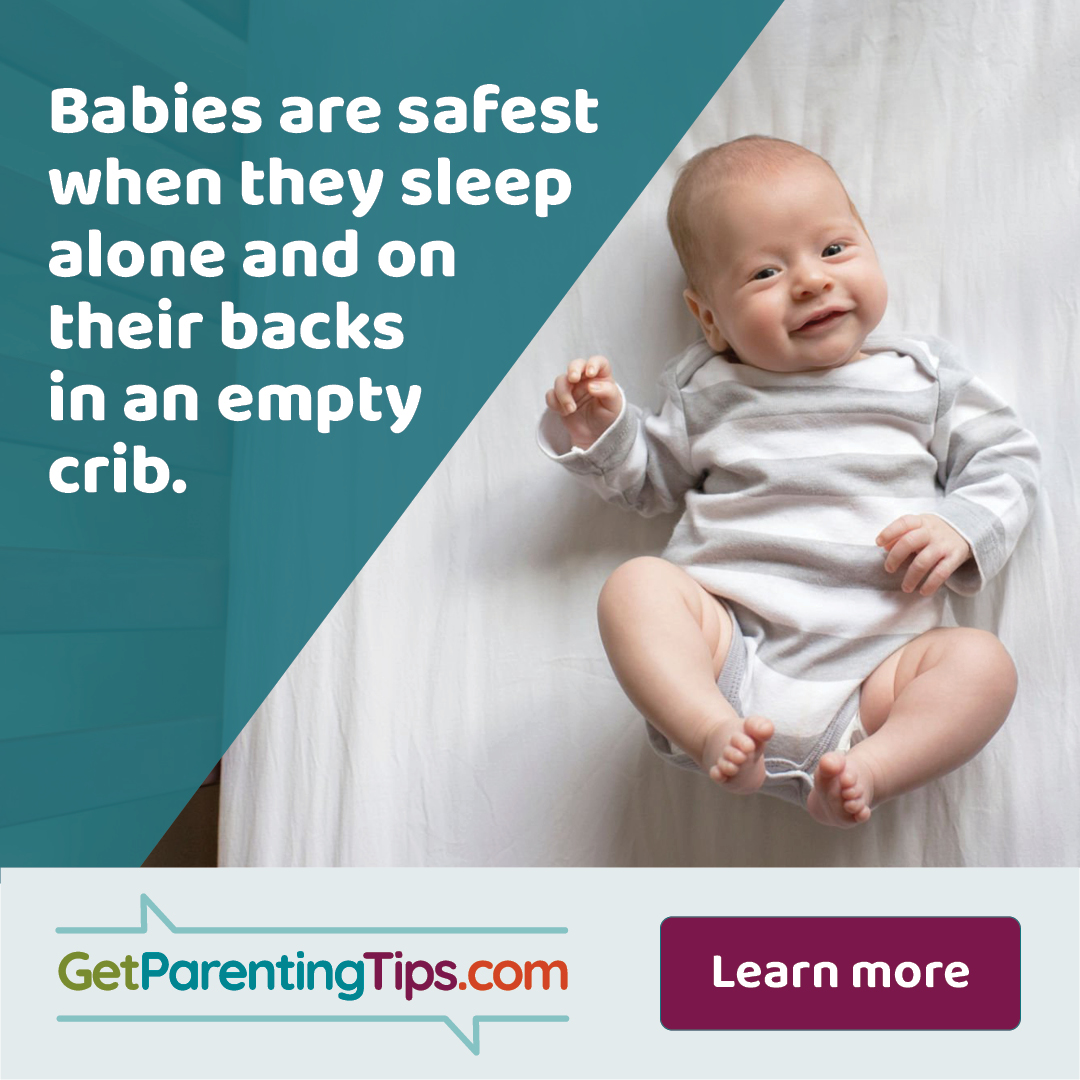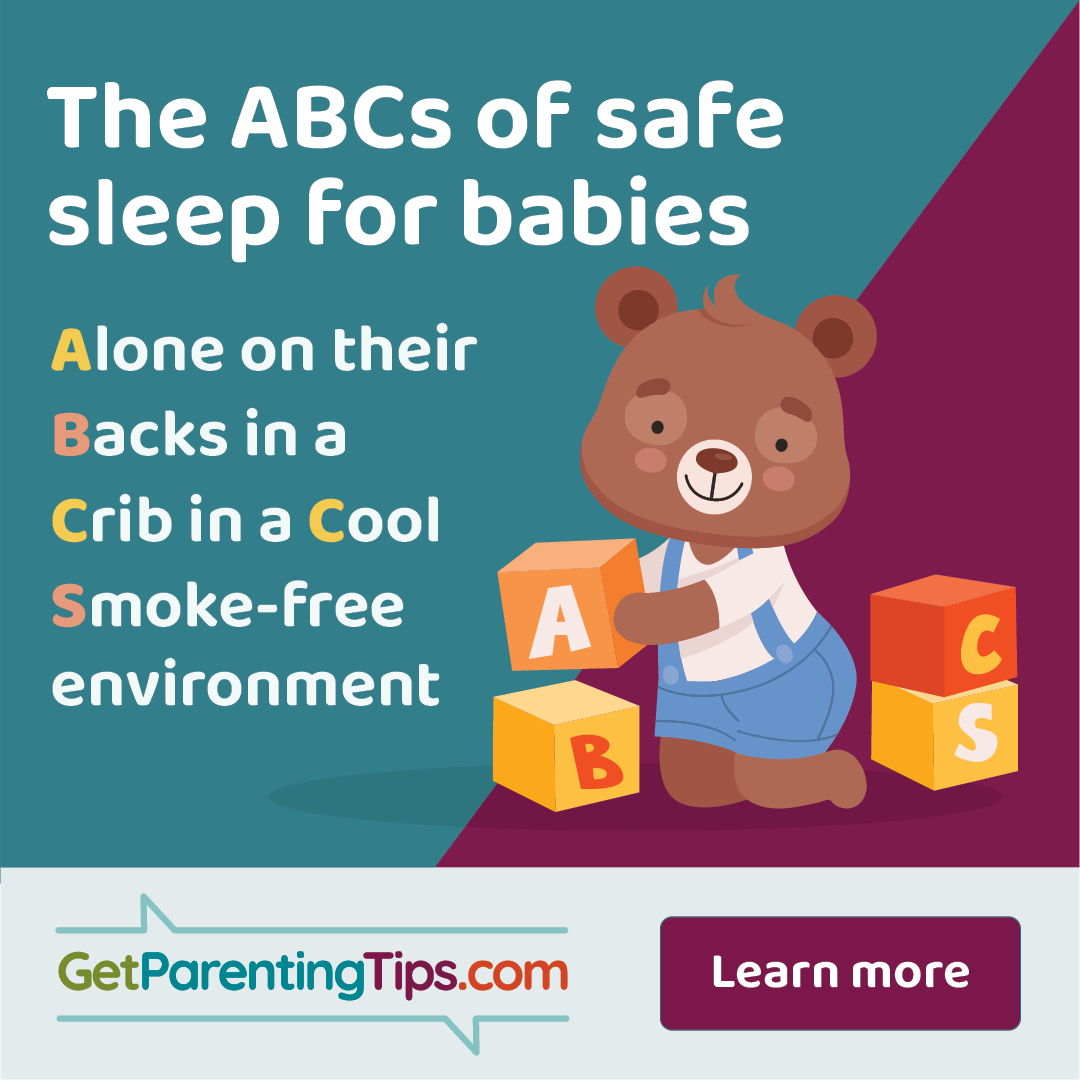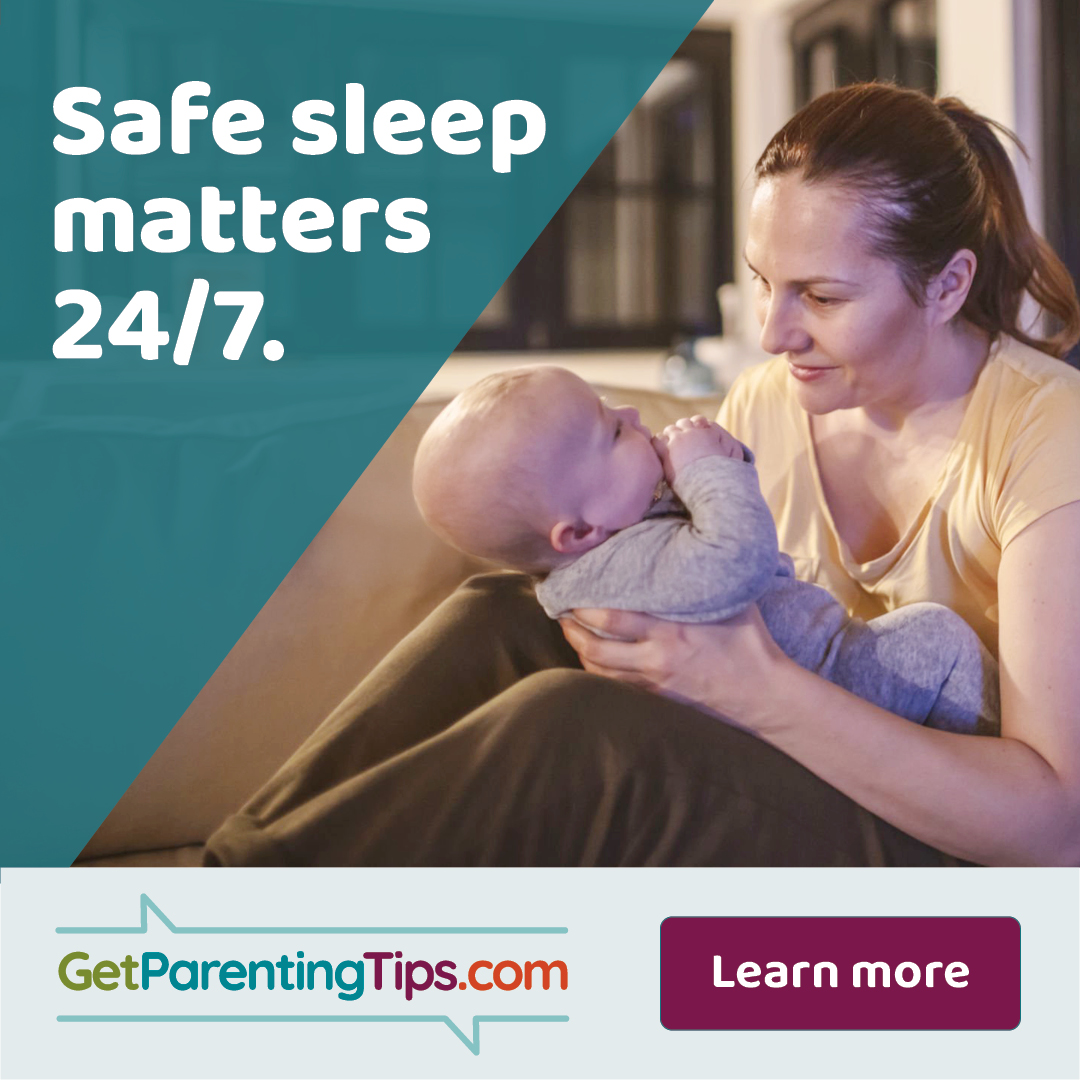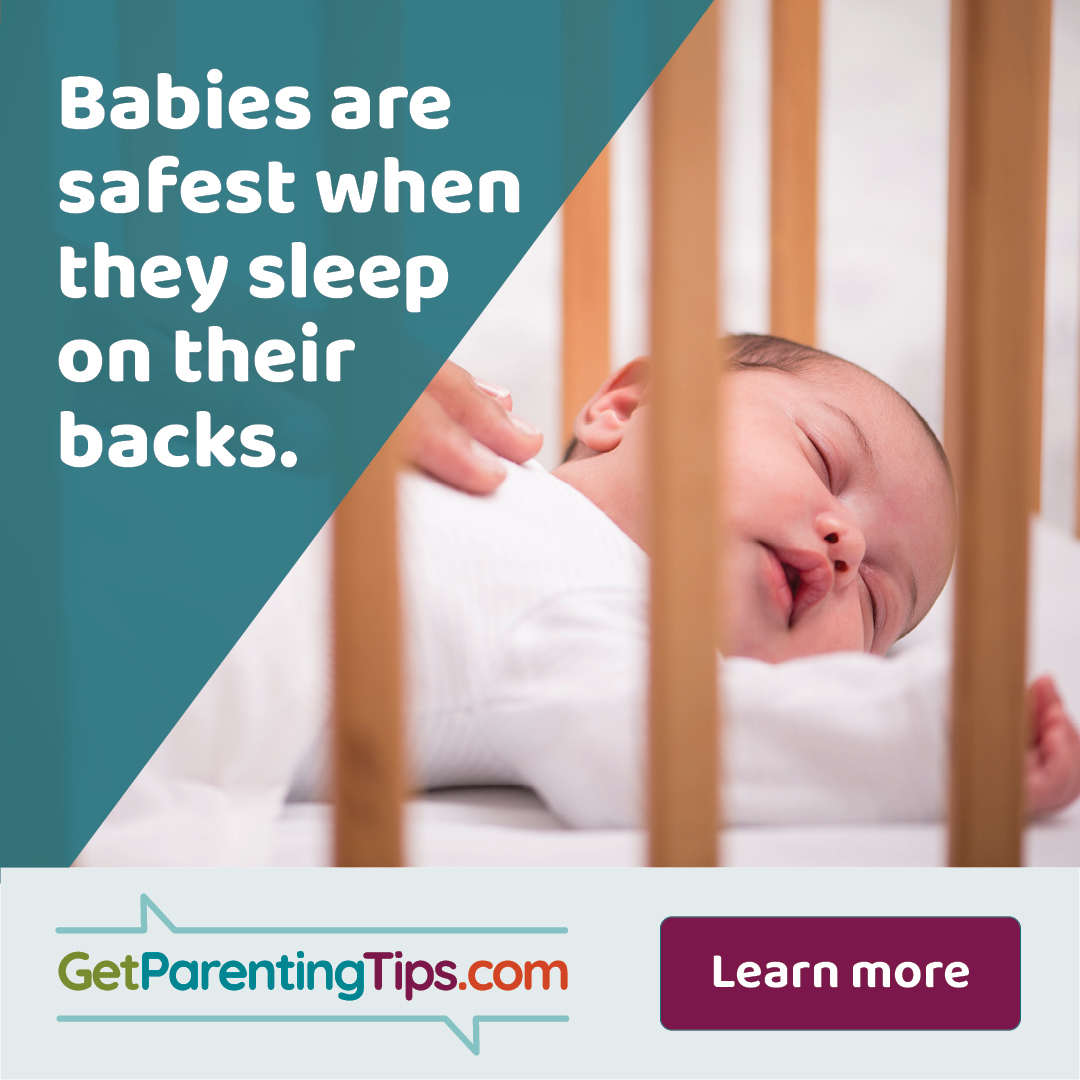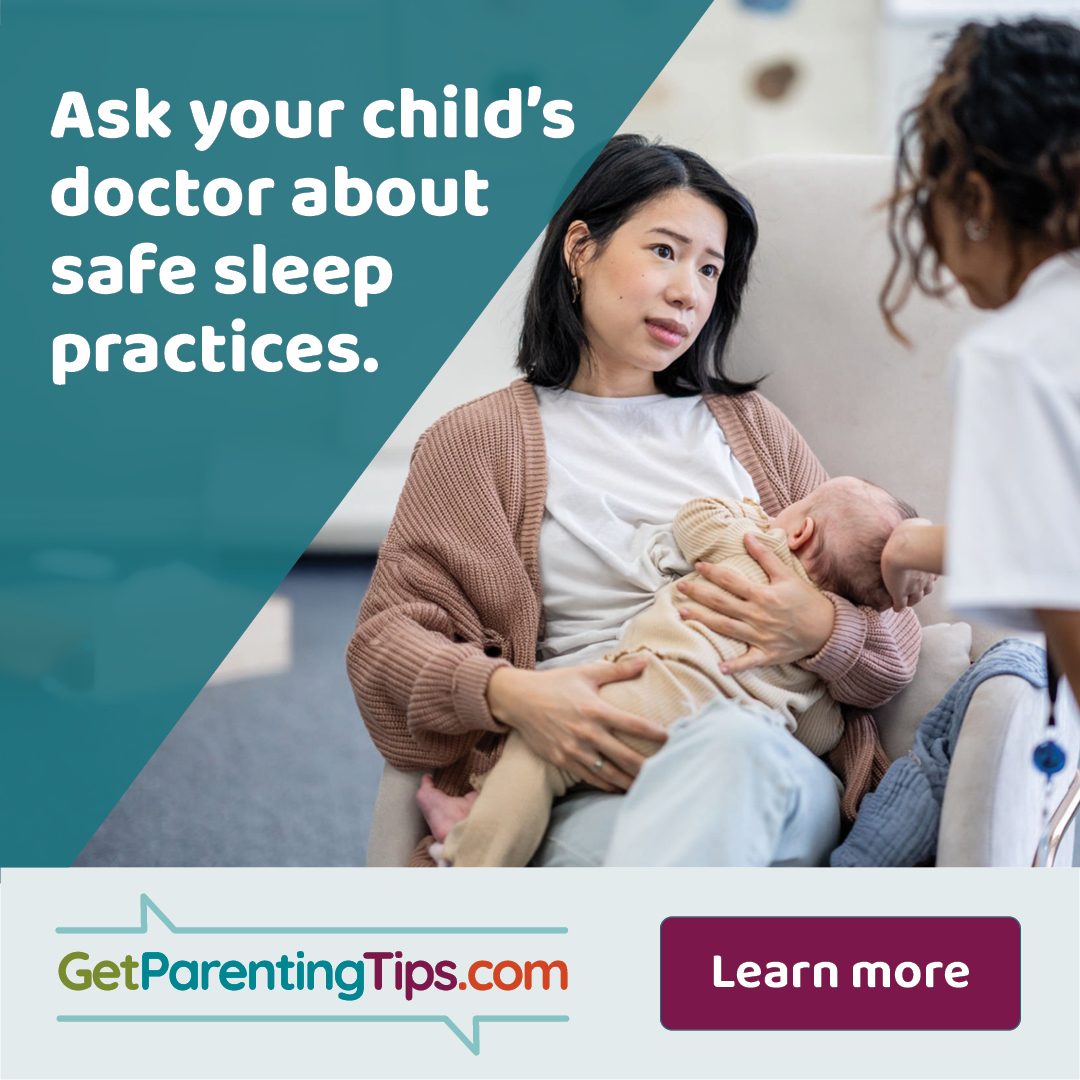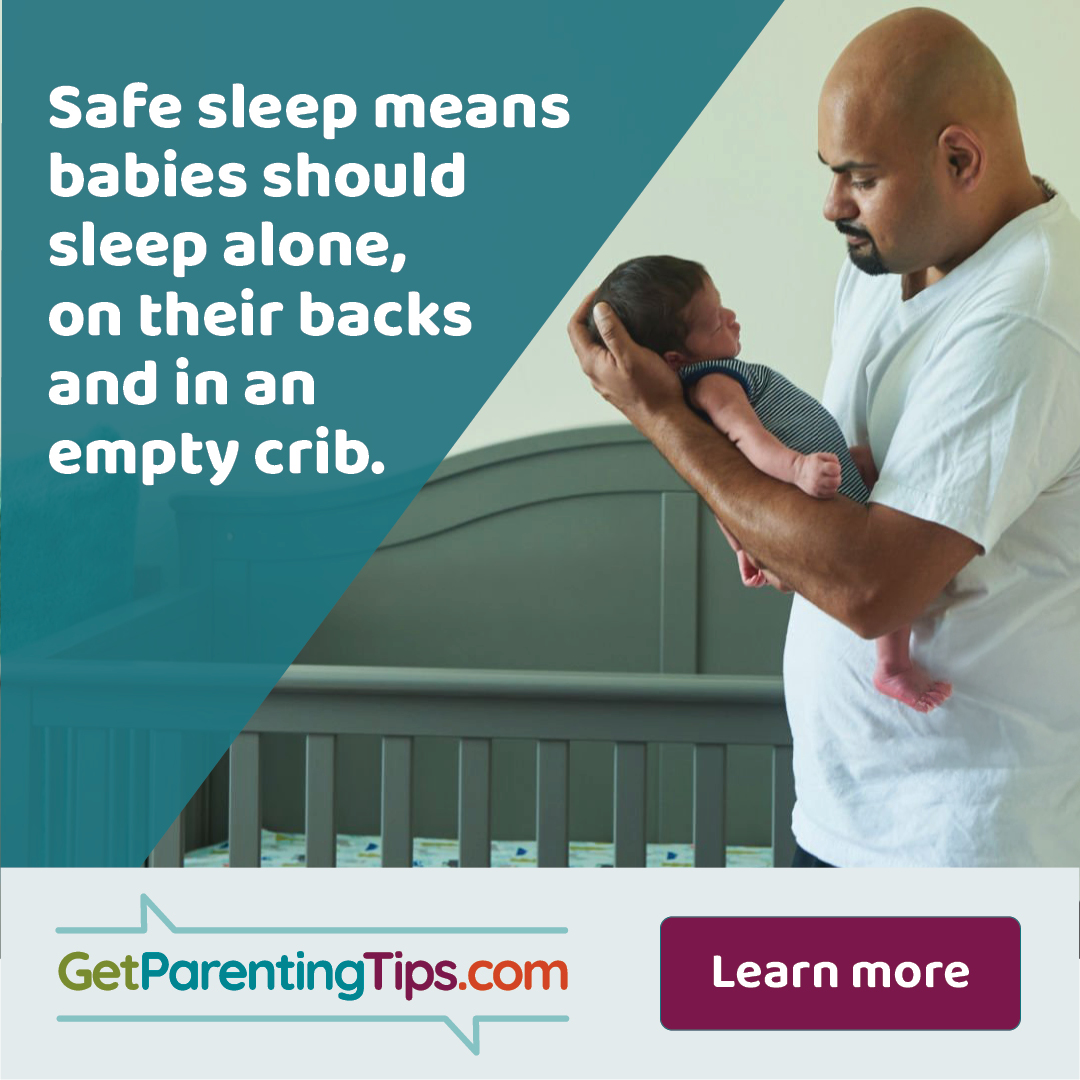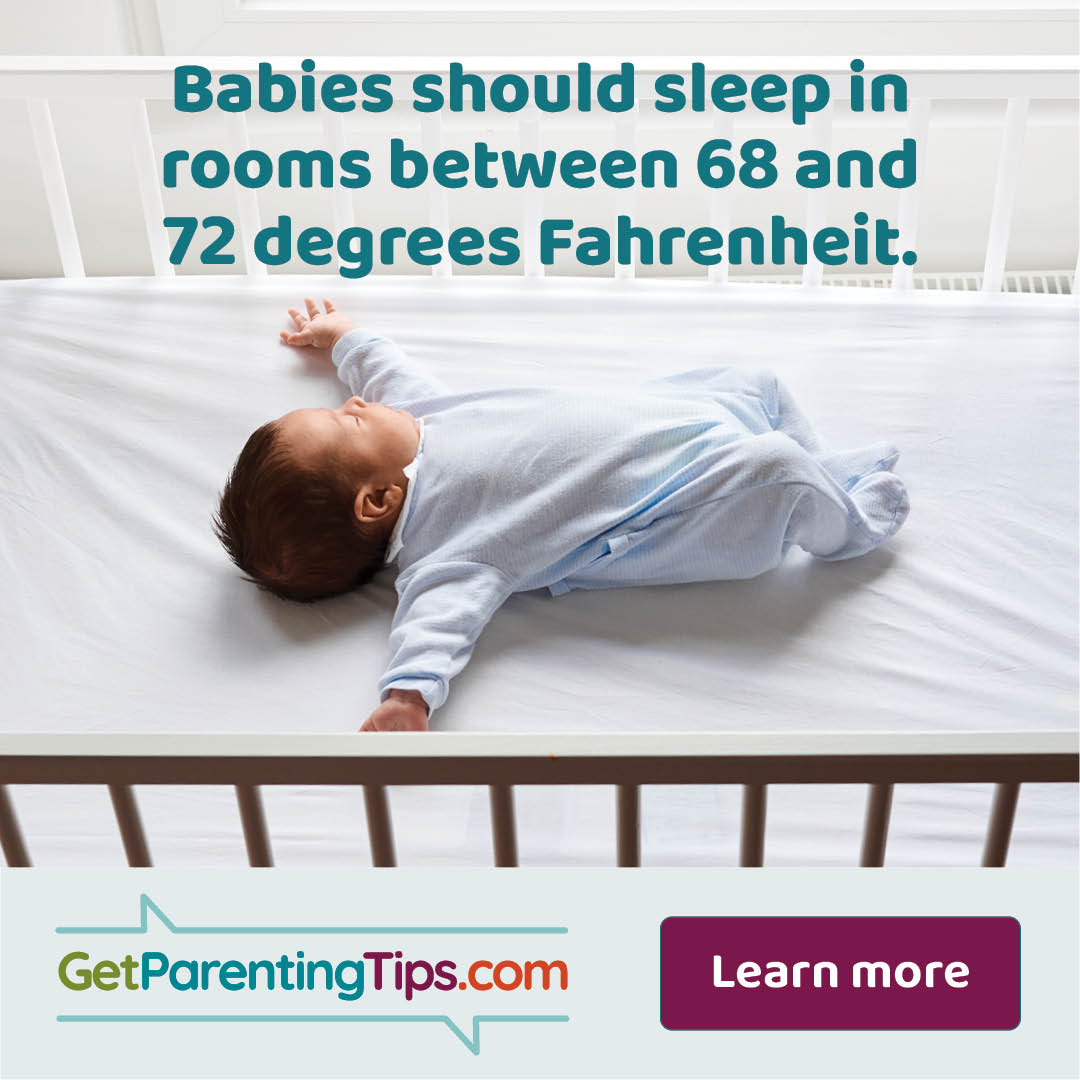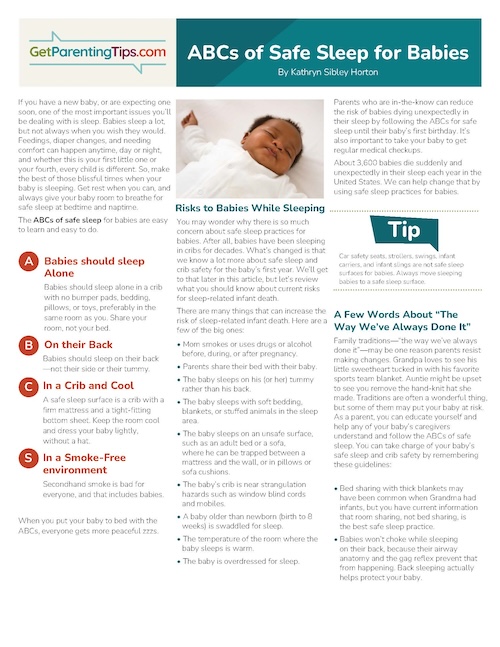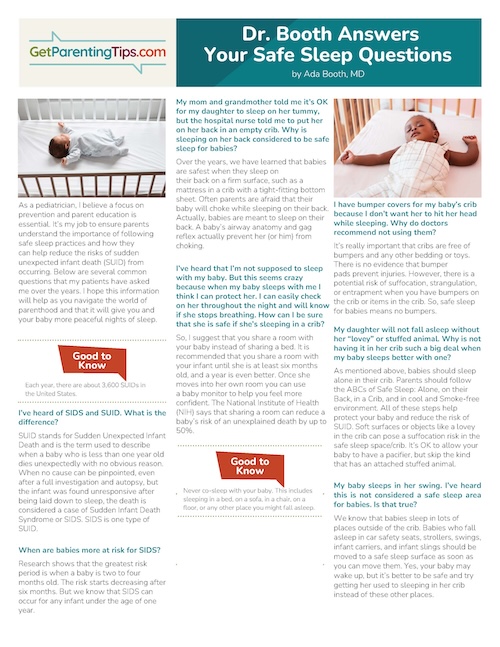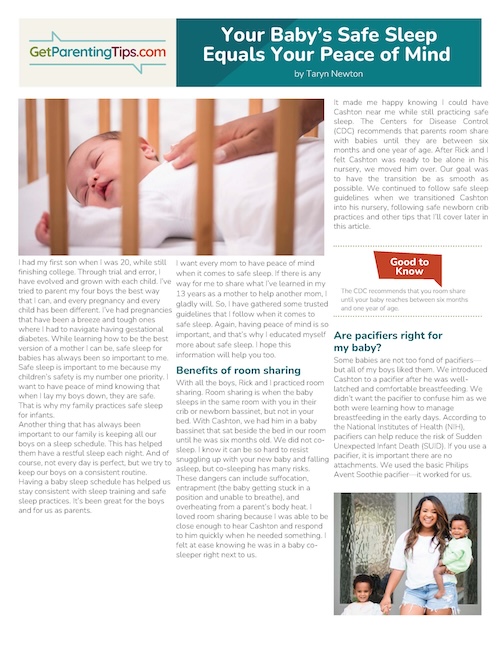Understanding Safe Sleep
Parents want what is best for their children. However, knowing what is best isn’t always easy. Having conversations in a respectful and nonjudgmental manner is the best way to address any misconceptions or concerns a parent may have when it comes to safe sleep practices.
Videos
Social Media Posts
- Babies are safest when they sleep alone and on their backs in an empty crib. Parents may feel safest with their baby in their arms, but there’s one time when that’s not the case — sleep time. Babies should sleep alone in a crib without bumper pads, pillows, toys or any bedding besides a fitted sheet. Check out GetParentingTips.com to learn more.
- The ABCs of safe sleep for babies. Alone on their Backs in a Crib in a Cool Smoke-free environment. One day you’ll be teaching your child the ABCs. Until then, remember to practice the ABCs of safe sleep.
- Safety matters 24/7. Whether it’s 3 a.m. or 3 p.m., make every sleep a safe sleep. GetParentingTips.com is here to help no matter what time your baby is resting.
- Ask your child's doctor about safe sleep practices. Have questions about safe sleep? GetParentingTips.com offers advice from experts and parents like you who can share their tips on keeping your baby safe while sleeping.
- Babies are safest when they sleep on their backs. Some people like to sleep on their sides or their stomachs, but infants are safest when they sleep on their backs. Learn more about safe sleep at GetParentingTips.com.
- Safe sleep means babies should sleep alone, on their backs and in an empty crib. The ABCs of safe sleep help keep Texas babies safe. GetParentingTips.com to learn more.
- Protect your baby by practicing safe sleep. It’s natural for parents to want to do anything they can to protect their children. Start with practicing safe sleep when they’re infants. Learn more at GetParentingTips.com.
- Share your room, not your bed. Make sure you’re practicing safe sleep by sharing a room, not a bed. For more information, visit GetParentingTips.com.
- Babies should sleep in rooms between 68 and 72 degrees Fahrenheit. What is your ideal temperature when going to sleep at night? While it’s different for every adult, babies should sleep in rooms between 68 and 72 degrees Fahrenheit. For more safe sleep tips, check out GetParentingTips.com.
- Practice safe sleep every time your baby sleeps. Most new parents are happy to grab a quick nap whenever and wherever they can, but they should be cautious about their baby doing the same. When a baby falls asleep in a car, safety seat, stroller, swing, carrier or infant sling, their breathing can become obstructed. Visit GetParentingTips.com to learn how you can practice safe sleep.
Social Graphics
Right click and save to download. Download all safe sleep social graphics (ZIP).
